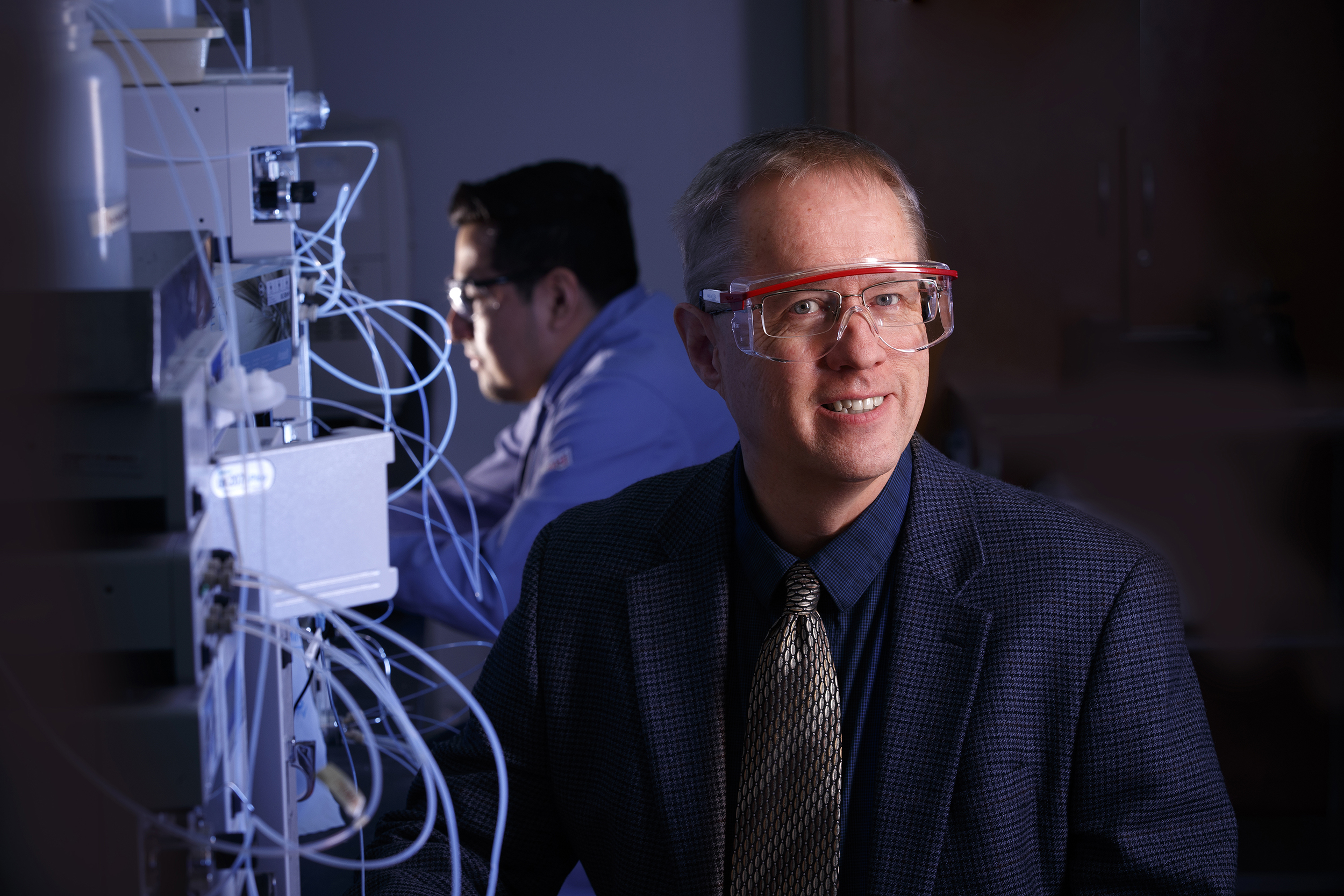
Antibodies left behind after COVID-19 are a signal that the body’s immune system fought the virus. But to reveal this information, antibody tests must separate the signal from the noise.
It’s a defining concept for University of Nebraska–Lincoln chemist David Hage, whose research in affinity chromatography involves rapidly separating compounds from complex samples. He now joins a nationwide team, led by the company ni2o Inc., that is repurposing patented technologies to develop and manufacture a fast-acting COVID-19 antibody test.
Hage and his graduate students are leading the test’s design — choosing biological components, materials and overall methods — while working with ni2o to develop a product that is easy to use in clinical settings.
“Typically, if it was just my group working on it, a project like this would take a year or more, because there are many steps involved,” said Hage, the James Hewett University Professor of Chemistry. “And we’re trying to do this process in months, not years.”
The test’s design starts with a particle-based support material. It acts like Velcro inside a test tube: When a sample of blood or saliva passes through the particles, only the desired compounds stick. Working with NUtech Ventures, the university’s commercialization affiliate, Hage previously patented a support material that helps compounds rapidly bind together, along with a method for using the material in clinical testing.
Now, Hage’s team is using that patented research to develop a faster antibody test.
“The speed of this type of test is often limited by how long it takes the antibodies and proteins to come together in a solution,” Hage said. “By using very small particles for the support material, we’re making shorter distances for compounds to travel, and we’re able to speed up this binding process.”
The next step introduces synthetic proteins that mimic the COVID-19 virus. These proteins attach to COVID-19 human antibodies — if they are present in a sample — and the resulting pairs stick to the support material, like open-faced sandwiches. But they still have to be detected.
The final step is adding fluorescent tags that also bind to COVID-19 human antibodies, topping off the now-glowing sandwiches.
“The support material we are using allows us to take the fluorescent tag and focus it into a very small region, which allows us to get a better signal,” Hage said. “By doing this in a very small volume, you get a much sharper signal, and the tag is easier to detect.”
These sharper signals could make the antibody test more sensitive, allowing it to detect lower levels of COVID-19 antibodies and correctly yield a positive test result. The test must also be specific: If someone has not had COVID-19, the test needs to ignore antibodies from other viruses, correctly reporting a negative result.
“It comes down to how you design the test,” Hage said. “We’re using the best elements that are available, which we think will have both high sensitivity and specificity.”
The team’s initial goal is to accurately identify any type of COVID-19 antibodies. But as the project progresses, they would like to design tests that detect different types: IgM antibodies, which are first produced during an infection, versus IgG, which are produced later on, versus IgA, which are found in mucous and saliva.
Ultimately, these tests could help public health officials understand the spread of the virus. They could also help organizations determine who to enroll in vaccine clinical trials: People who have never had the virus, and therefore have no protective antibodies, would provide a clearer understanding of a vaccine’s effectiveness.
“As researchers, we understand the importance of this work,” Hage said. “It is a pretty challenging project, but we’re doing our best to make this happen.”








